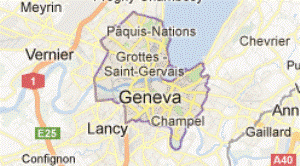GENEVA DATELINE
Cruise U
July 9, 2014 · 0 Comments

By Matthew Stevenson:
The cost of attending college has indeed increased more quickly than inflation in recent years, but it has not risen as fast as many people imagine. The main reason for the misunderstanding is the fact that the list price of college – especially the list price of elite private colleges – receives far more attention than the actual price. The list price is the one that colleges highlight in their brochures and that media accounts often mention; the actual price, which takes financial aid into account, reflects what families truly pay and, by any imaginable definition, matters more.
—New York Times, August 22, 2013
For high-achieving, low-income students, some of the cheapest places to attend college are the ones with the highest list prices. Thanks to their endowments, these elite colleges often award large scholarships to poor and even many middle-class students. For example, despite Harvard’s published annual cost of about $60,000, parents of Harvard students making less than $65,000 are expected to make no contribution; parents making $65,000 to $150,000 typically pay no more than 10 percent of their income.
—New York Times, September 18, 2013
Is a college education, once the birthright of every graduating American high school senior, worth $233,000 over four years? Put another way, if tuition costs about$20,500 a semester at the average private university and assuming a four-course load, is the average class worth $142 an hour for all those seminars about Siddhartha or management ethics?
Would the money be better spent enjoying 172 cruises (at $1,349 a pop) around the world and filling your stateroom with books from amazon and lectures from the iTunes university? I suspect the food and dating would be better.
As the father of four children, with the last on the doorstep of Knowledge U, I think a lot about the cost efficiency of American colleges. As it happens, we have raised our children in Switzerland, where they have gone through the local (French-speaking) school system.
In weighing the choices of a university education, I have the chance to compare American colleges versus those in Europe, where tuition at many universities is nearly free, provided you can make the grades. (One Swiss teacher said to my son’s class: “Chemistry is a train leaving the station. If you’re not on it, there’s not much I can do.”)
In Switzerland, for example, anyone with a maturité fédérale (the highest of the high school degrees) can go to any Swiss university by signing up online. Neither applications nor essays are required. No one wants to know or cares about your “biggest disappointment” or “top ten list.”
The weeding process comes after the first year of university, when sometimes more than half the class is dropped, especially in faculties like law and medicine. Passing requires a B average and there are quotas on numbers in the class.
In Switzerland, as in many European countries, the liberal arts are taught in high school (collège, gymnasium, lycée, etc.). Universities teach an advanced, specialized discipline, akin to a master’s program.
No one goes to a Swiss university to “find themselves.” Only those who found themselves in high school (usually about one-in-three kids) gets into university, and of that about number about 60 percent graduate.
Those who fail aren’t consigned to pitching pennies (a 1960s allusion to the occupation of drifting students, often featured in go-back-to-school-ads), but shunted into numerous commercial and other professional programs to prepare themselves for their working lives.
Compared to American colleges, Swiss and European universities are hierarchical. My older daughter went to the University of Geneva—one of the oldest (1559) in the world, dating to Jean Calvin (not one to pass out incompletes or put Elvis as Anthology on the curriculum, as the University of Iowa did).
Many of her classes were spent taking on board a professor’s lectures, and recalling his or her wisdom on the exams. There were few electives or seminars. Writing a paper about Zen and the Art of Motorcycle Maintenance wasn’t part of the equation.
In contrast, my second daughter went to a liberal arts college in New York City, and the comments on her first paper sum up all the differences between U.S. and European educational systems. After she analyzed a French colonial novel, the professor said: “You wrote me a Swiss paper, with facts and quotes. I want to know what you think.” Few Swiss professors want a student’s opinion.
When the time came for my older son to pick a college, he looked in the U.S., Britain, and Switzerland. His interests were German and economics, and he was granted an interview at Cambridge. (It felt like a papal indulgence.)
The interview spoke volumes about English universities, which offer places—at least at Cambridge—to students that have already mastered a field of study (unlike in the U.S., which encourages students to try new subjects).
My son’s interview—all in German—covered works of literature (Schiller, Goethe, etc.) more suitable for a thesis defense than an entrance interview. Had he applied to Cambridge in a subject that he had already studied extensively—say French or math—he might have gotten in.
He ended up at a German-speaking university (St. Gallen) in northern Switzerland, studying economics and getting German by way of the sink-or-swim method. (He swam.)
I have no idea where our last child, also a son, will go to university. He has another year to decide. Another feature of European high schools is that kids are often 19 or older when they graduate, an age that doesn’t align well for liberal arts colleges in the U.S. Who wants to get an undergraduate degree at age 23 and maybe finish graduate school at 26?
Because he speaks English at home, one option for my son is to attend university in England. The price advantage of British university is that it lasts three years and costs a fraction of an American education (about $50,000 in tuition, as opposed $164,000 in the U.S.). But England is a corner of a foreign field not our own.
| Join Our Free Newsletter |
As best I can tell, American colleges do a better job at encouraging creativity and independent thinking, while European university graduates speak more languages and have a better grounding in difficult subjects.
Unlike the University of Buffalo, no European University offers a course in Cyberporn and Society. They probably assume you had it in high school.
Just to get into a Swiss university, you need to have mastered (at a fairly high level) physics, chemistry, biology, several languages, math, French literature, Latin, geography, music, and history. As my younger daughter said of the tolerances and backsliding in American higher education: “There’s no fear in it.”
Intellectually, I have few quibbles with American colleges. Because I am a product of the liberal arts, I consider my life one long undergraduate semester, which allows me to read and write (as I have in the last year) about the Franco-Prussian War, Chinese history, American trains, wine, the Tour de France, economics, the battles of Ypres and Dieppe, and the novels of Balzac. (I will be sad when I graduate, although at age 60 I still have more electives that interest me, as well as a UC San Diego seminar, God, Sex, Chocolate: Desire and the Spiritual Path.)
Nevertheless, I do despair at the cost of American colleges, as it strikes me that much of the $233,000 goes into basketball arenas, dining halls, fraternity coordinators, foreign study deans, tree pruning, parking lots, swimming pools, diversity committees, mascots, and gender-equality conferences.
Increasingly, American universities are also the dodgy middlemen between loan-sharking student loan associations and families convinced that without college degrees, their children will fail to make the grade at Goldman Sachs.
Thirty-seven million Americans are on the hook for more than $1 trillion in student loans—some of which went into that course, Sport for the Spectator, offered at The Ohio State University.
Why aren’t there no-frills colleges that offer the equivalent of a Princeton education but without all the Tiger paraphernalia and mock Gothicism? The campus could be in an abandoned warehouse, suitably refreshed, and the library would be available on everyone’s iPad or account at amazon.com.
Starbuck’s can handle the student union, and sports could be limited to softball in the park. Anyone interested in following a football team could (at their own expense) watch the games on ESPN. All the tuition would go toward professors’ salaries. I am sure the cruise shipping companies could help out with a junior year abroad.
Enrollment would be run much like a budget airline’s computer system, with the popular courses and late inscriptions costing more.
To keep the market system alive, students would pay per class attended, perhaps by swiping a debit card at the door. Professors could keep a share of their gate. (Maybe then they would update their class notes on The House of the Seven Gables?)
Students would be awarded a degree whenever they published a book (subject to acceptance by the college) in their chosen field, but that could be years after they left the campus. It would be up to them to take the courses they need to finish their work.
Never again would graduates complain, as does Faber’s expelled John Blutarsky: “Christ, seven years of college down the drain. Might as well join the fucking Peace Corps.”
Matthew Stevenson, a contributing editor of Harper’s Magazine, is the author of “Remembering the Twentieth Century Limited,” a collection of historical travel essays. His new book, Whistle-Stopping America, was recently published.
By admin










Sorry, comments are closed on this post.